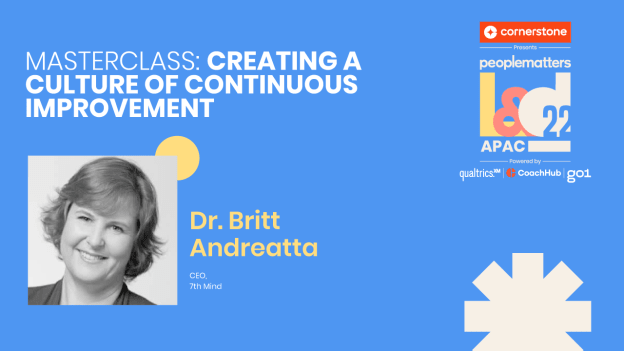Cultural imperatives of continuous development

The learning journey of the company comes with little scope to pause. This is because, for many, learning has come to the forefront of how companies prepare their employees for a future marked with uncertainty and change; mandating a learning culture that is continuous and impactful in catering to business needs. A recent Bersin study found that a strong learning culture accounts for over 46 percent in improving business outcomes. Robust learning programs have also been shown to play an important role in attracting millennial talent and keeping employees engaged. A recent talent report stated that over 40 percent of millennials and gen z employees are bound to leave a company if they aren’t learning fast enough. For companies, these factors further accentuate the need to have a robust, culture of continuous learning and development.
This remains a challenge for many today.
To deliberate further on how companies can create a continuous learning culture, Britt Andreatta, Ph.D., CEO, 7th Mind spoke at the latest People Matters L&D Conference APAC spoke on the nuances of creating a continuous learning culture. “Lifelong learning is the new norm,’ Britt explained, adding that today, ‘the average life-cycle of an employee is 50 to 60 years. We also know that 5 years is the half-life of any learned new skill.” Given this context, it is imperative to have a structured lifelong learning program geared to enable employees to learn and grow at their jobs.
Adopting a growth mindset
‘A key component today in creating a culture of learning is a growth mindset,’ noted Britt. A concept developed by Carol Dweck, a psychologist at Staford university, growth mindset refers to a mindset type that believes that human capabilities are dynamic; that they can be built, and modified, per one’s wish and intent. A growth mindset looks at uncharted territories as opportunities to grow and learn, uses the pressure of failures to grow rather than taking them as roadblocks.
In her book Mindset: The New Psychology of Success, Carol pits her model of a growth mindset against what she refers to as the ‘fixed mindset’; a mindset type that limits a person’s ability to be creative and resourceful and often ends ups restricting what can be humanly achieved.
‘When it comes to learning,’ added Britt, ‘ a fixed mindset is an approach of doing what I am good at as I cannot learn anything new. They also see as efforts as unnecessary and steer away from challenges.’ This according to Britt proves harmful to developing a culture where continuous learning is prioritized. ‘Growth mindset on the other hand is one see challenges as a path to mastery, embrace them as an opportunity to grow.'
Growth-minded individuals make for good learners as they leverage their brain's inherent capability to learn and adapt. With the brain's neuroplasticity and ability to learn new things remaining functional long into an individual’s life, it is important to make the shift from a fixed mindset to a growth mindset. ‘This shift helps companies enable their employees to seek new opportunities of growth and make learning an important part of their work,’ added Britta.
The need for psychological safety
In what she referred to as the ‘Growth culture manager model’, Britt explained that ‘managers today play a key role in enabling employees to grow and thrive. Today they have tools they can use to guide development, tools like coaching to accelerate growth, and can provide them remove barriers.’
‘Among all this, however,’ noted Britt, ‘Providing psychological safety is paramount to learning.’ Harkening to the great resignation, she explained how many chose to leave their companies as a result of not finding a safe environment in their companies that enabled them to learn and grow.”
From a learning perspective, creating psychological safety enables employees to question, offer new ideas, and have the space to commit mistakes. 'By creating this shared belief, teams and managers can support a culture of learning,’ explained Britt and adding that, 'employees that operate in a zone of high accountability but are supported with high levels of psychological safety make fall under the learning zone which is optimized for results.’
Focus on building habits through coaching
According to Britt, skills can be learned through practice and enable employees to move to the next levels. This circles back to whether companies have the right learning paths in place. Using this learning HR professionals can address gaps.” But while specified learning paths are great in charting the employee's growth, Britt noted that managers and leaders can play a key role in ensuring such pathways lead to impactful change by building deliberate learning in their coaching programs.
Coaching and mentoring remain a key ways to both address current learning needs and create a culture of continuous learning. “It helps employees develop impactful habits and enables learning new skills through repetition and exposure,” noted Britt. According to her, repetition is an important practice in ensuring new skills are learned and adopted quickly. And building coaching and mentoring in a way that new skills are taught by regular exposure and practice, learning become impactful. This form of deliberate learning can enable employees to learn their skills faster and ensure better performance.

















